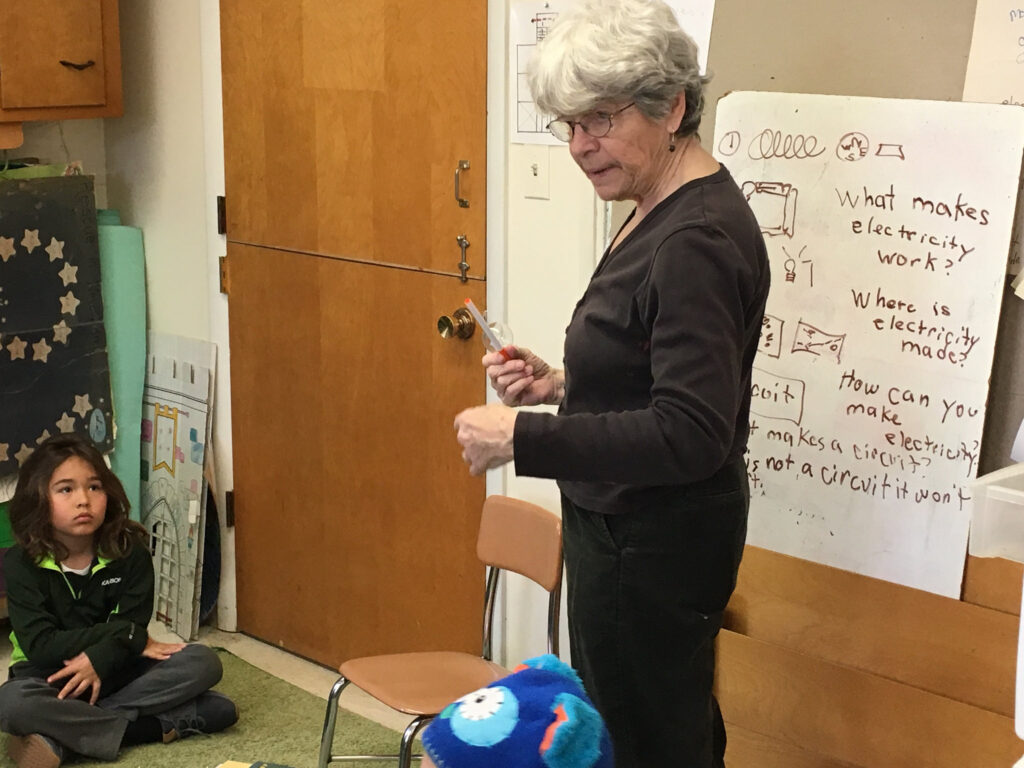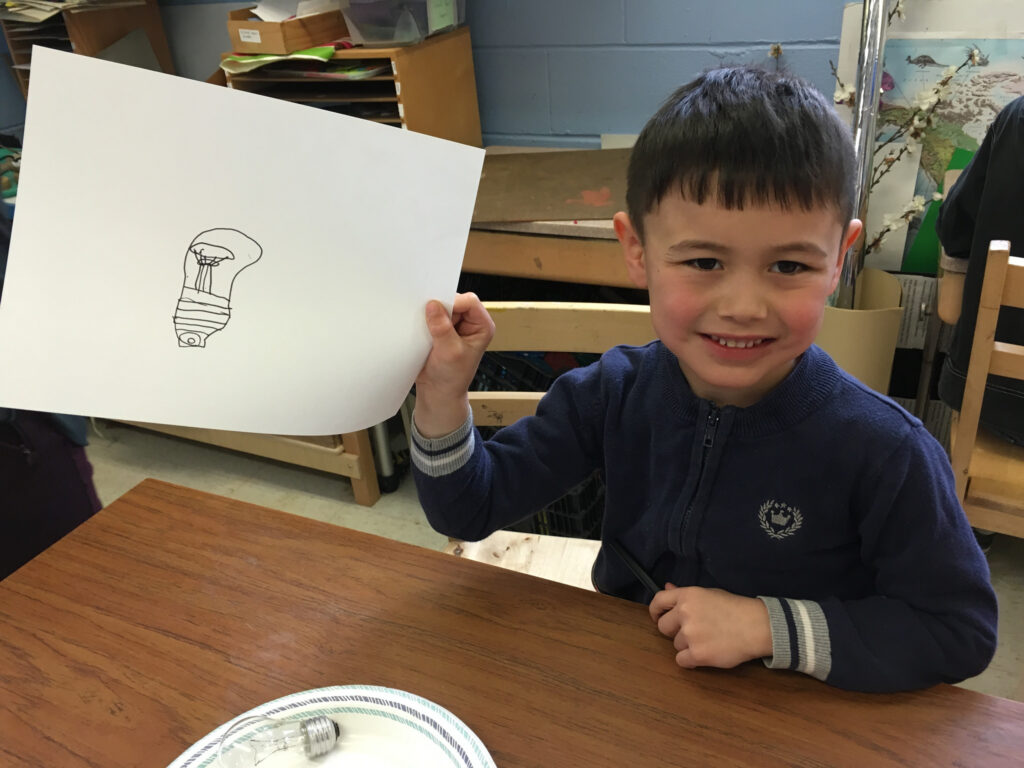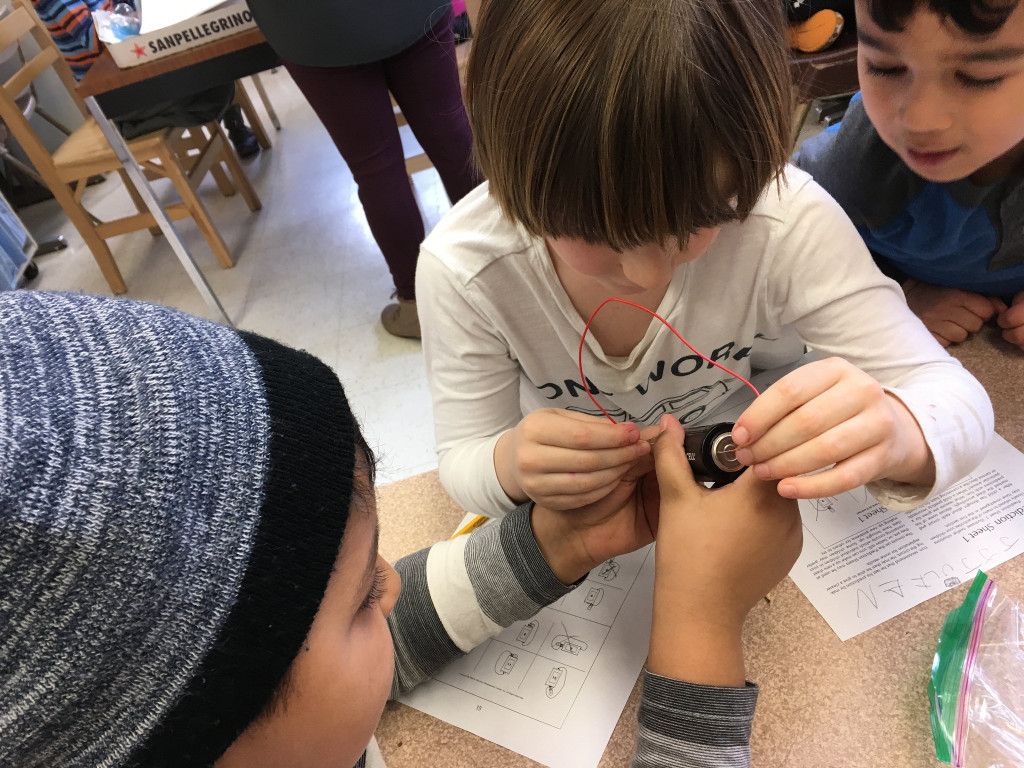 The youngest students have recently begun a unit on electricity. We follow the same format we used for our Butterfly class. We meet once a week for 50 minutes. For the first half hour we read and talk. For the next 20 minutes we have a studio time where we break up into 4 or 5 activities, i.e., bookmaking, clay, turning 2 dimensional shapes into 3 dimensional shapes, pretend play with a medieval city puzzle and making electric circuits in different ways. We have met 4 times and have yet to get through a short book on electricity called Switch On, Switch Off. We do lots of talking, covering a wide range of topics–where do have electricity in our lives, trying to figure out what a circuit is, etc.
The youngest students have recently begun a unit on electricity. We follow the same format we used for our Butterfly class. We meet once a week for 50 minutes. For the first half hour we read and talk. For the next 20 minutes we have a studio time where we break up into 4 or 5 activities, i.e., bookmaking, clay, turning 2 dimensional shapes into 3 dimensional shapes, pretend play with a medieval city puzzle and making electric circuits in different ways. We have met 4 times and have yet to get through a short book on electricity called Switch On, Switch Off. We do lots of talking, covering a wide range of topics–where do have electricity in our lives, trying to figure out what a circuit is, etc.
In our first classes we worked in pairs to use a circuit of wire and a magnet to show how moving a magnet through a coil makes electricity move through the wire and move the red point on a compass in the wire’s coils. More recently we used snap circuits to make a circuit with a switch that turned a light on and off. Then children drew the circuit. This week we will see how many ways if any, we connect a flashlight bulb and a battery with a wire to make the bulb light.
 We discussed why you might not see wires on poles in some places since the wires are buried underground. Some children thought they might do this because the wires take up too much room in a city where there are a lot of buildings. Others felt it might be because in Winter snow might break the wires. Or storms or hurricanes might break them, too.
We discussed why you might not see wires on poles in some places since the wires are buried underground. Some children thought they might do this because the wires take up too much room in a city where there are a lot of buildings. Others felt it might be because in Winter snow might break the wires. Or storms or hurricanes might break them, too.
One student pondered how do they capture electrons? I know how they move but how do they capture them, that’s the question. Another friend agreed that snow might break the wires from the pole to the house, but also noted that electrons would fall in the snow when the wire breaks…(perhaps, like water might pour out of hose???) Another friend pointed out that electrons are in the air because electrons and atoms go together to make lightning.
Wonderful questions arise–I don’t get how electrons only flow through metal and not plastic? What a perfect question. We need a shill in every class. A friend gave an answer-metal that conducts have special electrons to make electricity. Another student added that electrons and atoms are together. But on reflection–a student rethought themselves and said, “It doesn’t matter if a lot of rain hits the wires because the metal wire is on the inside protected by plastic or rubber.
We ended with a lovely question – “Why do sometimes atoms stick together?” And then we went to studio time. Such a lot of good thinking.
